Versertile Modern Tenkara Tackle – Rewrite
2020/11/25fly fishing in japan,kebari,level line tenkara,rod flex,tapered line tenkara,tenkara,tenkara rod
Tenkara is a traditional Japanese fly fishing method using simple set up of a handrod, a casting line, a tippet, and a fly. It is dating its origin back to the medieval time among mountain river keepers as a efficient way to catch stream trout. Today, modern Tenkara has more advantage of mobility and fishing capability by using telescopic carbon fiber rod that can easily fit inside a backpack.
What's required in casting line in Tenkara is similar to that of fly line and that of a leader in one seamless package. A flex of rod casts the line with given mass, which then forms a loop to penetrate through the air. Then the line needs to be turned over to deliver the tippet and fly attached to the end of it.
It has been rising to popularity among part of fly fishing anglers abroad who have enough curiosity to try this style. If you already know how to do western style fly fishing, then only thing you need to learn is how to tie your line to Hebiguchi or knotted end of rod tip. (I'll upload instruction later). If you haven't done fly fishing at all, then Tenkara is a good entrance to learn fly fishing with only few knots to remember.
1. Tenkara Rod
This is the beauty of simplicity. You can pick any hand rod to do tenkara, but choosing one from the selection of tenkara-tuned rods will make things absolutely easy. Tenkara rod is designed with its centre of balance within 70cm from the butt section for optimal casting performance and it weighs less than 100g (3 1/2oz) to avoid fatigue. It also fits the following criteria to provide maximum fishing performance:
Rod Length - Match to Size of Water
3.3 meter / 10'9" for short, 3.6m / 11'9" for standard use. There are longer rods available all to serve how far anglers need to make presentation.
Rod Flex - Match to Line Type
There are 3 choices of matching rod flex to the choice of casting line all to deliver desired presentation of mayfly action.
5:5 ratio or slower action rod is for level line only that is best suited to produce drag-free drifting action of mayfly dun caught on surface either top water or underwater hatch.
7:3 ratio or faster action rod is for tapered line only that gives you fast line speed to cut through windy valley and make sure to turn over the fly into tight spot in fast current river. But you need to slow down just before the touchdown to make sure to produce the falling action of mayfly in graceful slow speed or spook the fish.
6:4 ratio or medium-fast action is comfortable for both level line and tapered line that can also adopt to PVC line cut out from fly fishing running line. If you are just starting, beset flex is 6:4.
2. Casting Line/Leader
Standard length of line should be set to the same as the length of rod for optimal performance, but experienced anglers do use longer line to reach further distance or avoid a drag. 4 go or 16 lb test fluoro carbon is recommended, but you can make adjustment by using thinner line for higher sensitivity or stronger line for more castability when there is too much wind.
Level Line
Modern Tenkara is mostly using level line who has strong advantage of not causing drag when drifting fly due to the even distribution of weight throughout the line. This style was developed to fish more effectively in wider and slower river than where tenkara was originally developed. Fluoro-carbon monofilament that has low stretch has made essential to this style.
When casting larger fly or make the line wind-resistant, you simply use thicker diameter casting line to increase the mass.
Tapered Line
Traditional Tenkara used a tapered line that is made of the braids of horse's tail hair. Tapered line has fast line speed and able to sharply deliver a fly into the dynamic vision of fish to agitate, then drop in tight spot only briefly before moving onto another set of cast.
Today, tapered line made out of mono filament has more weight and powerful taper to make the cast and turn over easier, but it can easily cause a drag when drifting fly that is compensated to some degree by extending the length of tippet much like how it is done in J-style of fly fishing.
3. Tippet
If you are using dry fly, nylon 1-1.5 go (4-6lb). Otherwise, I would use 4lb test fluorocarbon. Length used is usually 1-2m depends how long you'd like to drift your fly.
4. Fly
You can use any western fly fishing pattern in modern style or select traditional Japanese Kebari that has the beauty of wabi-sabi minimalism imitating mostly mayfly while able to adopt to caddis and terrestrials. Modern style fly has more natural appeal coming from match the hatch tradition and Kebari is expected to be brought to life by the mastery of presentation. Both styles catch fish just the same and many anglers are open-mindedly crossing over between East and West in this.
5. Presentation
To mimic top water hatch of mayfly, every part of cast counts, because yamame has superb dynamic vision with fast swimming ability preparing to attack insects still in the air. That is for top water hatch. As to underwater hatch, traditional style use reverse-hackle fly aka Sakasa Kebari to make active presentation to recreate underwater hatch movment of different species of mayfly.
*Postface
この記事のディスカッションに参加する | Join the Discussion
東京フライフィッシング&カントリークラブのFacebook グループ「Friends Lobby」ではメンバー以外の方とのディスカッションも行っています。気になる情報や質問などはこちらまで!
Choose the right Tackle,Tenkarafly fishing in japan,kebari,level line tenkara,rod flex,tapered line tenkara,tenkara,tenkara rod
Posted by Neversink
Related Posts
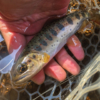
Red-spotted Salmon: River Ito, Izu Peninsula, Shizuoka
After checking potential outdoor event v ...
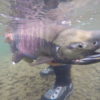
Keta Salmon | Sake or Shirozake
Sake or Shirozake / Keta Salmon or Chum ...

Sansui Kawazuri Kan (Freshwater Fishing House), Shibuya
My very own first angling tackle shop ev ...

Milanese Tenkara-ist
I took on half-day guided trip for Milan ...
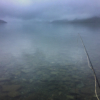
Misty Mountain Lake of Trouts – Part 1: Lake Trout of Trout Lake
2017 season didn't start as planned havi ...
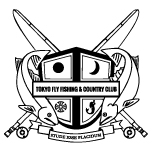




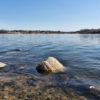
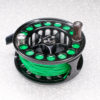

Discussion
New Pnigbacks & Trackbacks
[…] later in the 20th century. Today we see variety of company producing tenkara tackle from something very versatile to some cross breed between western and eastern fly fishing rod thinking into something kids can […]